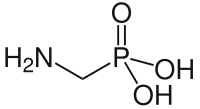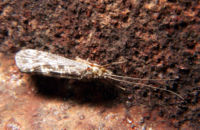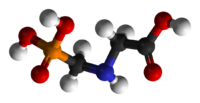
Evaluation of the herbicide glyphosate, (aminomethyl)phosphonic acid, and glyphosate‐based formulations for genotoxic activity using in vitro assays
Sign Up to like & getrecommendations! Published in 2023 at "Environmental and Molecular Mutagenesis"
DOI: 10.1002/em.22534
Abstract: Glyphosate, the most heavily used herbicide world‐wide, is applied to plants in complex formulations that promote absorption. The National Toxicology Program reported in 1992 that glyphosate, administered to rats and mice at doses up to… read more here.
Keywords: phosphonic acid; glyphosate; aminomethyl phosphonic; glyphosate based ... See more keywords

Oxidative stress induced by glyphosate-based herbicide on freshwater turtles.
Sign Up to like & getrecommendations! Published in 2017 at "Environmental toxicology and chemistry"
DOI: 10.1002/etc.3916
Abstract: Freshwater ecosystems face very strong anthropogenic pressures, among which overexploitation, habitat degradation, flow modification, species invasion, and water pollution lead to growing threats on biodiversity. Urbanization through wastewater treatment, industry through the release of inorganic… read more here.
Keywords: glyphosate based; stress induced; stress; degraded waters ... See more keywords

Concentrations of the glyphosate-based herbicide Roundup® causes developmental defects in Artemia salina.
Sign Up to like & getrecommendations! Published in 2023 at "Environmental toxicology and chemistry"
DOI: 10.1002/etc.5639
Abstract: Roundup® is the most used glyphosate-based herbicide. During agricultural use it may directly contaminate existing aquatic ecosystems, posing severe concerns for the safety of non-target terrestrial and aquatic organisms. We investigated the outcome of exposure… read more here.
Keywords: roundup; glyphosate based; artemia salina; based herbicide ... See more keywords

Glyphosate‐based herbicides induces autophagy in IPEC‐J2 cells and the intervention of N‐acetylcysteine
Sign Up to like & getrecommendations! Published in 2022 at "Environmental Toxicology"
DOI: 10.1002/tox.23534
Abstract: Glyphosate‐based herbicides (GBHs) are the most widely used pesticide in the world, and its extensive use has increased pressures on environmental safety and potential human and livestock health risks. This study investigated the effects of… read more here.
Keywords: glyphosate based; based herbicides; ipec cells; regulation ... See more keywords

Glyphosate‐based herbicide induces long‐lasting impairment in neuronal and glial differentiation
Sign Up to like & getrecommendations! Published in 2022 at "Environmental Toxicology"
DOI: 10.1002/tox.23549
Abstract: Glyphosate‐based herbicides (GBH) are among the most sold pesticides in the world. There are several formulations based on the active ingredient glyphosate (GLY) used along with other chemicals to improve the absorption and penetration in… read more here.
Keywords: herbicide induces; glyphosate based; long lasting; differentiation ... See more keywords

Co‐exposure of iron oxide nanoparticles and glyphosate‐based herbicide promote liver toxicity in guppy (Poecilia reticulata): A histochemical and ultrastructural approach
Sign Up to like & getrecommendations! Published in 2022 at "Environmental Toxicology"
DOI: 10.1002/tox.23591
Abstract: Citrate functionalized iron oxide nanoparticles (IONPs) are employed for various purposes‐including environmental remediation but the interaction of IONPs with aquatic contaminants is poorly understood. Among those, glyphosate‐based herbicides are toxic and affect target organs such… read more here.
Keywords: glyphosate based; poecilia reticulata; iron oxide; oxide nanoparticles ... See more keywords

Can environmental concentrations of glyphosate affect survival and cause malformation in amphibians? Effects from a glyphosate-based herbicide on Physalaemus cuvieri and P. gracilis (Anura: Leptodactylidae)
Sign Up to like & getrecommendations! Published in 2020 at "Environmental Science and Pollution Research"
DOI: 10.1007/s11356-020-08869-z
Abstract: Herbicides are the most common agrochemicals used in crops. Among them, glyphosate is the most widely applied in the world. Herbicides, especially organophosphates, have been shown to be hazardous to non-target species, including amphibians. The… read more here.
Keywords: cuvieri gracilis; physalaemus cuvieri; glyphosate based; effects glyphosate ... See more keywords

Subchronic exposure to a glyphosate-based herbicide causes dysplasia in the digestive tract of Wistar rats
Sign Up to like & getrecommendations! Published in 2021 at "Environmental Science and Pollution Research"
DOI: 10.1007/s11356-021-15051-6
Abstract: Glyphosate-based herbicides (GBH) are the most widely used herbicide for treatment of crops in the world. The digestive tract is one of the first systems exposed to pesticides, and damage to this system can affect… read more here.
Keywords: herbicide; glyphosate based; tract; wistar rats ... See more keywords

Synergistic effects of glyphosate- and 2,4-D-based pesticides mixtures on Rhinella arenarum larvae
Sign Up to like & getrecommendations! Published in 2021 at "Environmental Science and Pollution Research"
DOI: 10.1007/s11356-021-16784-0
Abstract: Glyphosate and 2,4-D are two herbicides commonly used together. Since there is little information about the interactions between these pesticides, the aim of this study was to evaluate the single and joint lethal toxicity of… read more here.
Keywords: arenarum larvae; synergistic effects; rhinella arenarum; glyphosate based ... See more keywords

Multicommutated Flow System for the Determination of Glyphosate Based on Its Quenching Effect on CdTe-Quantum Dots Fluorescence
Sign Up to like & getrecommendations! Published in 2018 at "Food Analytical Methods"
DOI: 10.1007/s12161-018-1192-3
Abstract: Glyphosate is the most widely used herbicide at the moment. It presents a broad spectrum of action, hence its use for many different crops. Regulatory agencies have constantly mentioned the low hazard potential to mammals.… read more here.
Keywords: based quenching; glyphosate based; multicommutated flow; glyphosate ... See more keywords

Metabolic profiling of goldfish (Carassius auratis) after long-term glyphosate-based herbicide exposure.
Sign Up to like & getrecommendations! Published in 2017 at "Aquatic toxicology"
DOI: 10.1016/j.aquatox.2017.05.004
Abstract: Glyphosate is an efficient herbicide widely used worldwide. However, its toxicity to non-targeted organisms has not been fully elucidated. In this study, the toxicity of glyphosate-based herbicide was evaluated on goldfish (Carassius auratus) after long-term… read more here.
Keywords: herbicide; long term; glyphosate based; exposure ... See more keywords